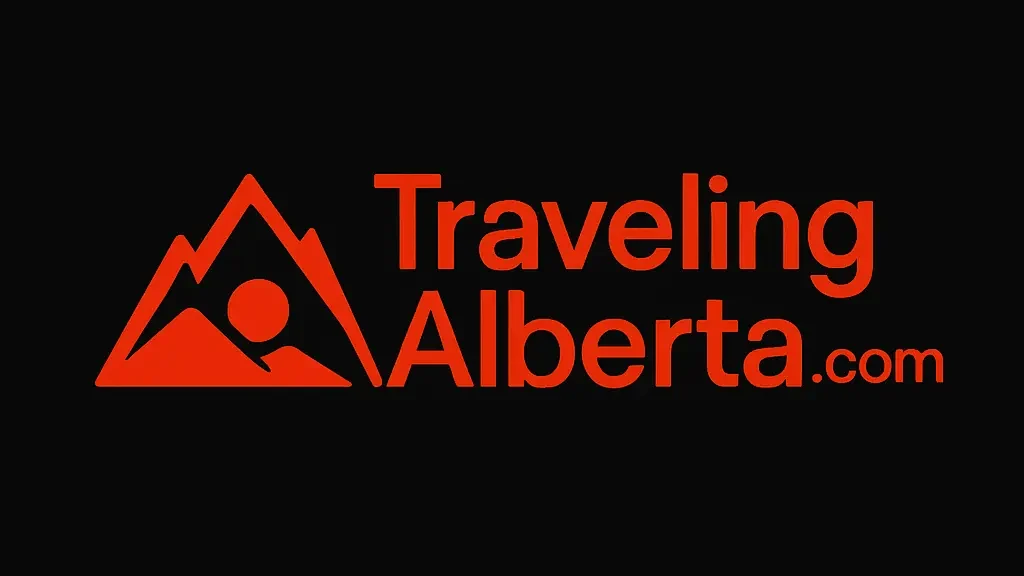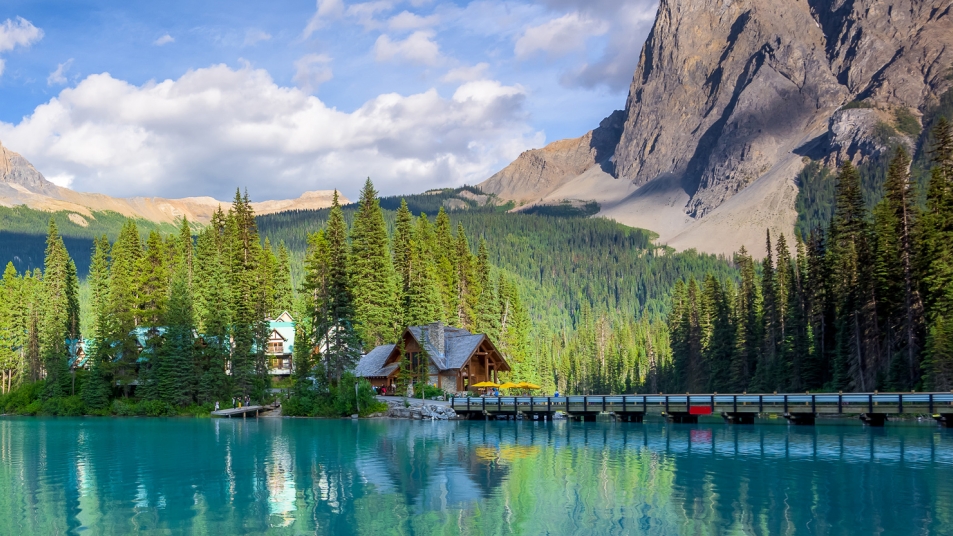When you think of the Canadian Rockies, Banff and Jasper National Parks probably come to mind first. But tucked away on the western slopes of the Continental Divide lies Yoho National Park British Columbia — a true natural wonder that remains blissfully under the radar for many travelers. Yoho, named after a Cree word meaning awe or wonder, delivers breathtaking beauty, towering cliffs, thundering waterfalls, turquoise lakes, and rich geological history.
Covering over 1,300 square kilometers, Yoho National Park forms part of the Canadian Rocky Mountain Parks UNESCO World Heritage Site. This hidden gem offers visitors an authentic wilderness experience, without the crowds often found in its neighboring parks. From hiking to backcountry camping, from photographing waterfalls to exploring fossil beds, Yoho is a paradise for outdoor enthusiasts, wildlife lovers, and photographers alike.
In this ultimate guide, you’ll discover Yoho’s top attractions, best hikes, practical travel tips, and everything you need to plan a trip to one of Canada’s most spectacular national parks. Whether you’re planning a day trip from Banff or a multi-day adventure, Yoho National Park British Columbia promises unforgettable memories.
Where is Yoho National Park?
Yoho National Park is located in southeastern British Columbia, straddling the western slopes of the Canadian Rockies right along the Alberta border. The park’s location makes it easily accessible from both British Columbia and Alberta and an ideal stop along the Trans-Canada Highway. Yoho is just 15 minutes west of Lake Louise and about an hour from Banff, making it perfect for combining with a trip to those better-known destinations.
The nearest town is Field, BC, a charming, small community situated within the park boundaries. Field offers accommodations, dining, and visitor services, serving as the park’s primary hub.
Driving distances to Yoho National Park:
- Lake Louise: 15 km / 15 minutes
- Banff: 80 km / 1 hour
- Jasper: 300 km / 3.5 hours via Icefields Parkway
- Calgary: 210 km / 2.5 hours
- Vancouver: 780 km / 8–9 hours
Yoho’s location at the Continental Divide gives it unique ecosystems and weather patterns, with lush forests and abundant rainfall on its western slopes. Rivers here flow toward both the Pacific and Atlantic oceans. If you’re planning a road trip through the Canadian Rockies, Yoho is an essential and rewarding stop.
Unique Features of Yoho National Park
What makes Yoho National Park British Columbia truly special is its combination of stunning landscapes, fascinating geology, and peaceful atmosphere. One of Yoho’s crown jewels is the Burgess Shale fossil beds, home to 500-million-year-old fossils that provide invaluable insights into early marine life. These fossil beds are among the most significant paleontological sites in the world.
Yoho’s landscapes are nothing short of spectacular. The park boasts soaring peaks, massive glaciers, deep valleys, and powerful rivers. Vertical cliffs rise as much as 3,000 meters (10,000 feet) above the valleys, creating dramatic scenery everywhere you look. Yoho is also home to some of Canada’s tallest waterfalls, including the magnificent Takakkaw Falls.
Another key feature is Yoho’s sense of solitude. Unlike its busier neighbors, Yoho offers quiet trails and uncrowded viewpoints, making it perfect for travelers who want to connect with nature in peace. The park’s minimal light pollution means the night skies are stunning — perfect for stargazing or photographing the Milky Way.
Whether you’re exploring ancient fossils, paddling on a turquoise lake, or camping under a canopy of stars, Yoho offers a unique and awe-inspiring experience in the heart of the Canadian Rockies.
Top Attractions in Yoho National Park
Takakkaw Falls
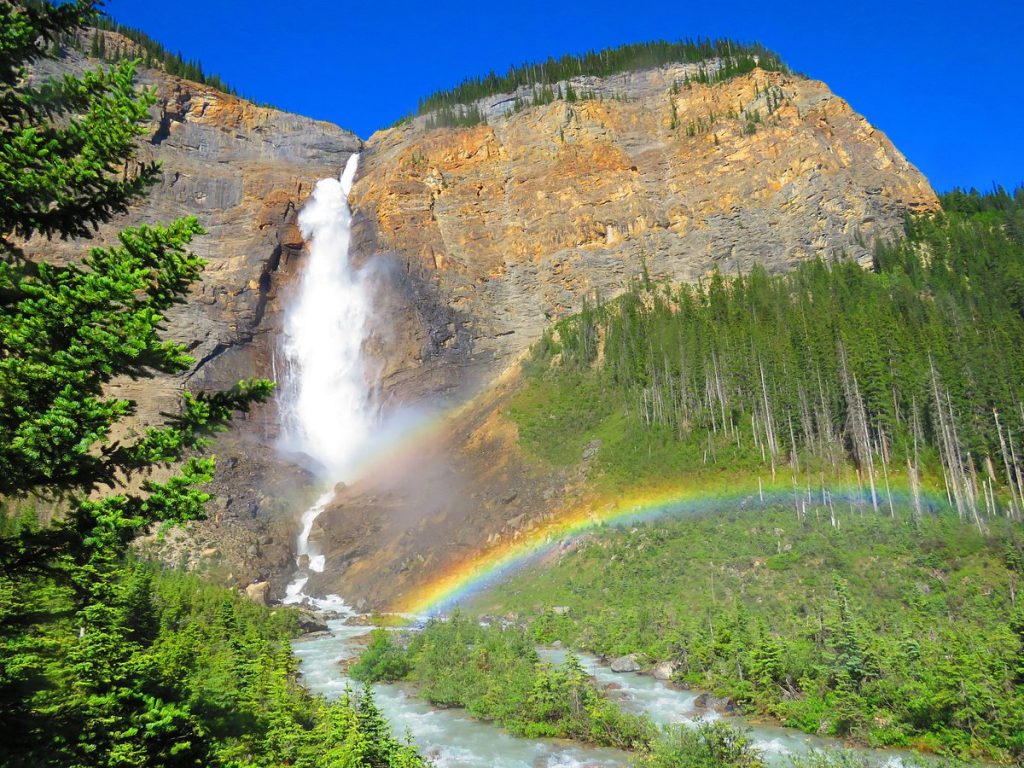
One of the most iconic sights in Yoho National Park is Takakkaw Falls, a towering cascade with a total drop of 373 meters (1,224 feet). The name Takakkaw comes from the Cree word for “it is magnificent,” and the falls live up to that description. The water originates from the Daly Glacier, part of the Waputik Icefield, and tumbles down sheer cliffs into Yoho Valley.
Takakkaw Falls is easily accessible during the summer and early autumn months via Yoho Valley Road. A short, flat 15-minute walk from the parking area takes you to several viewing platforms where you can feel the mist and take stunning photos. This is one of the most photogenic locations in the park — try visiting at sunset or sunrise when the light illuminates the cliffs.
Nearby, you’ll find trailheads for several hikes, including the Iceline Trail, one of the best day hikes in the Canadian Rockies. Whether you’re there for a quick visit or an all-day trek, Takakkaw Falls is a must-see highlight of Yoho.
Emerald Lake
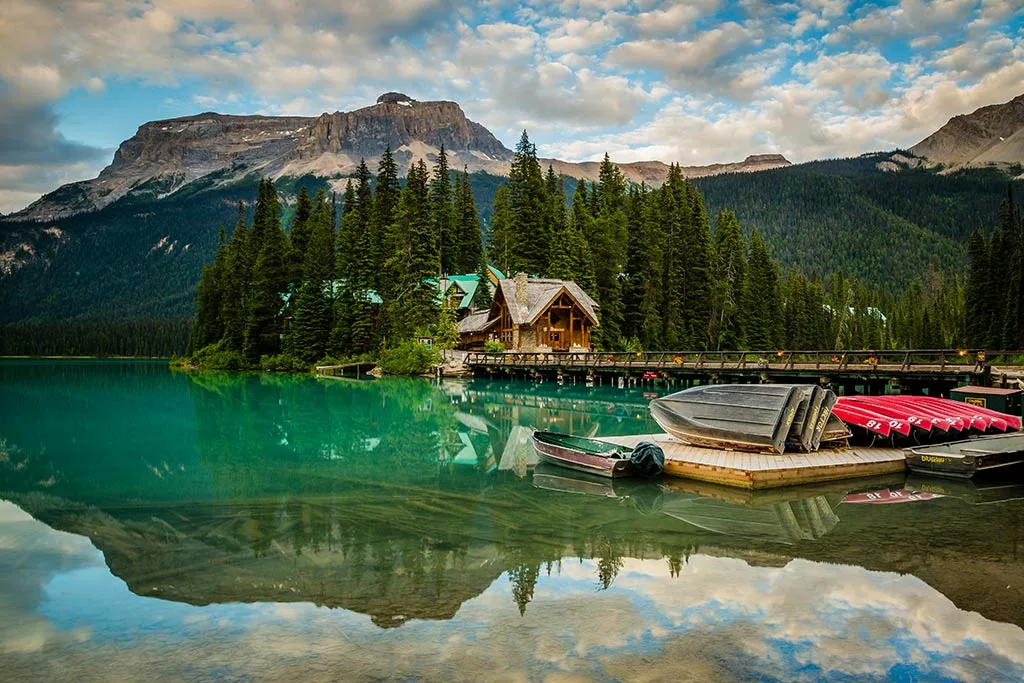
Emerald Lake is the largest lake in Yoho National Park and a sight that will stay with you forever. Its brilliant turquoise-green color comes from fine glacial sediment suspended in the water, reflecting light in a way that creates the lake’s vivid hue.
The 5.2 km (3.2 mi) Emerald Lake Loop Trail circles the lake, offering a flat, easy hike suitable for all ages. Along the way, you’ll pass through forest, meadows, and open shoreline with breathtaking mountain reflections on calm days. Canoe rentals are available in summer, and paddling on the still waters is one of the best ways to appreciate the scenery.
In winter, Emerald Lake turns into a snow-covered wonderland. Visitors can snowshoe or ski on and around the frozen lake. The Emerald Lake Lodge, perched on the lakeshore, offers cozy accommodations, fine dining, and some of the best views in the park. Whether you visit for an hour or stay overnight, Emerald Lake captures the essence of Yoho’s beauty.
Lake O’Hara
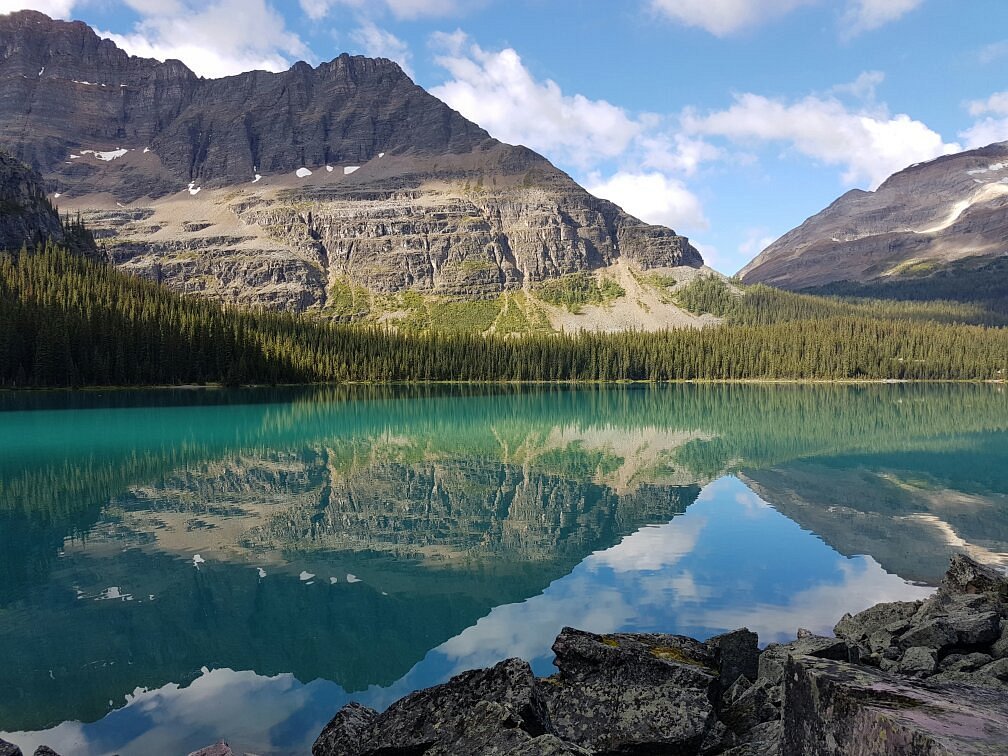
Lake O’Hara is a protected alpine paradise renowned for its beauty and ecological sensitivity. Access is strictly controlled to preserve the fragile environment, making a visit feel all the more special.
The lake is accessible via an 11 km (6.8 mi) hike or the Parks Canada shuttle (reservation required months in advance). Once there, you can explore a network of trails offering some of the most spectacular scenery in the Canadian Rockies. The Alpine Circuit is a challenging route that rewards hikers with panoramic views of Lake O’Hara, hanging valleys, and glaciers. The Opabin Plateau and Lake Oesa trails provide moderate alternatives with equally stunning vistas.
If you want to visit Lake O’Hara, plan well ahead — shuttle spots typically sell out within minutes of being released. Those who make it will enjoy a peaceful, pristine landscape unlike any other in the Rockies.
Natural Bridge

The Natural Bridge is a striking rock formation created by the erosive power of the Kicking Horse River. Over time, the river carved through the rock to form a natural arch, which continues to be shaped by the force of the water.
The site is easily accessible with a short walk from the parking lot. Multiple viewing platforms provide excellent vantage points to observe the river as it crashes through the bridge. Interpretive signs explain how the bridge formed and the geological forces at work.
In winter, the Natural Bridge transforms into an icy spectacle, with frozen cascades and ice formations that make it a favorite for photographers. It’s a quick but worthwhile stop on any Yoho itinerary.
Best Hikes in Yoho National Park
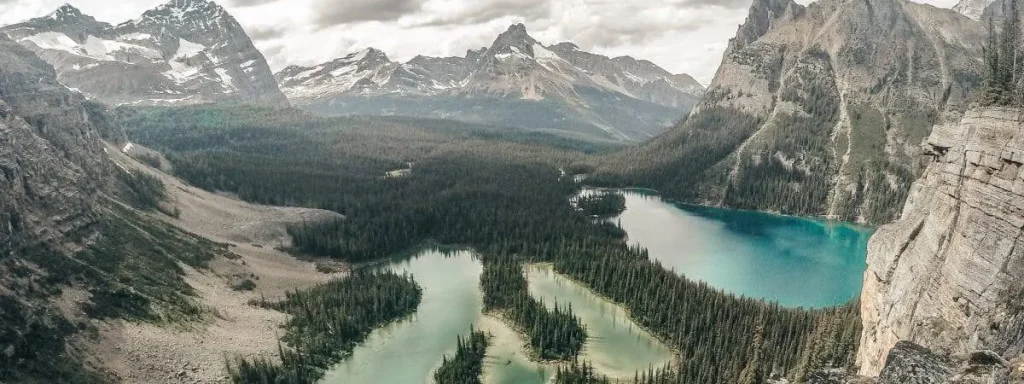
Yoho offers a variety of hikes for all skill levels. The Iceline Trail (20 km loop) is the park’s premier day hike, taking you past glaciers, waterfalls, and alpine meadows with constant panoramic views. For a gentler option, the Emerald Lake Loop is perfect for families and casual walkers. The Twin Falls Trail (16 km return) offers a moderate challenge, ending at a pair of dramatic waterfalls. The Wapta Falls Trail (5 km return) is an easy, family-friendly route to a thundering waterfall.
Camping & Accommodation
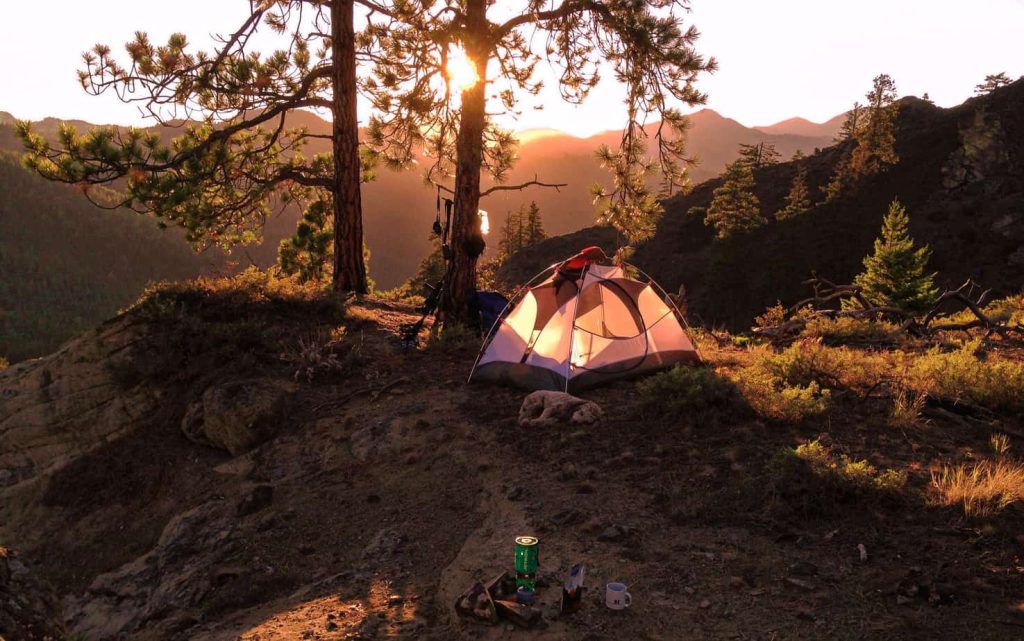
Yoho offers excellent camping options, from the full-service Kicking Horse Campground (with showers and RV hookups) to the quieter Monarch Campground. For backcountry enthusiasts, sites like Laughing Falls and Yoho Lake provide solitude under the stars.
Lodging options include the luxurious Emerald Lake Lodge, romantic Cathedral Mountain Lodge, and several inns and B&Bs in Field.
Wildlife & Safety
Yoho is home to grizzly and black bears, elk, deer, mountain goats, marmots, and many bird species. Visitors should carry bear spray, hike in groups, make noise on trails, and follow Leave No Trace principles. Never approach or feed wildlife.
Final Tips for Visiting Yoho National Park British Columbia
- Book campsites, shuttle buses, and lodges early
- Bring layers for changing weather
- Buy a Parks Canada pass online
- Download offline maps — cell service is limited
- Respect wildlife and nature
Conclusion
Yoho National Park British Columbia offers everything you could want from a trip to the Rockies — towering peaks, vibrant lakes, roaring waterfalls, and fewer crowds. It’s the perfect place for adventure, relaxation, and awe-inspiring scenery.
Start planning your Yoho trip today — and discover one of Canada’s most beautiful hidden treasures!
